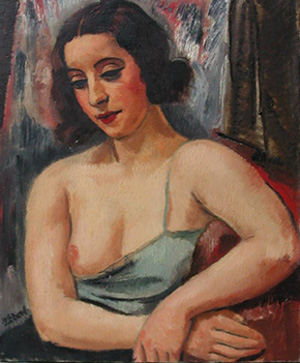François
Eberl
1887 -1962
Eberl was born in Prague in 1887. He studied at the Academy of Fine
arts in Prague beginning in 1903, but left in 1905 to travel Europe.
After periods in Stockholm, Munich, and Amsterdam he arrived in the
Montmartre district of Paris in 1911. He began exhibiting in the Paris
Salons in 1913, but in 1914 he volunteered for the French Army and served
through the war.
After the war he resumed his artistic career with an exhibition at the
Galerie Ève Adam in Paris. He exhibited continuously throughout
the rest of his life at numerous Paris galleries including Bernheim-Jeune
and Berthe Weill, and at the Salon Des Indépendants, Salon des
Tuileries, Salon Nationale des Beaux-Arts, and the Salon D’Automne.
In 1925 he exhibited at the Royal Academy in London. Eberl was awarded
Chevalier de la Légion d’Honneur in 1928. Throughout the
1930’s Eberl exhibited in Paris, and in 1938 he showed an anti-Nazi
painting at the Salon d’Automne. He went to Monaco where he was
active in the Resistance, he returned to Paris and in 1946 he had an
exhibition at Galerie Pétridès.
The Museum of Montmartre has had two retrospective exhibitions of Eberl’s
work, one in 1973 and again in 1987. Eberl painted a particular cross
section of society, focusing on prostitutes, card players, tough-looking
working people, and nude models. As one historian remarked it was the
“Montmartre of Pleasure and of Crime.”
Over a long career he developed a very distinctive style which makes
his paintings instantly identifiable to those familiar with his work.
Apart from the particular subject matter, Eberl had a distinctive color
palette which made generous use of earthy tones of browns and reds,
and the eyes of his subjects are almost always quite stylized, oversized,
almond shaped and very dark.
|

